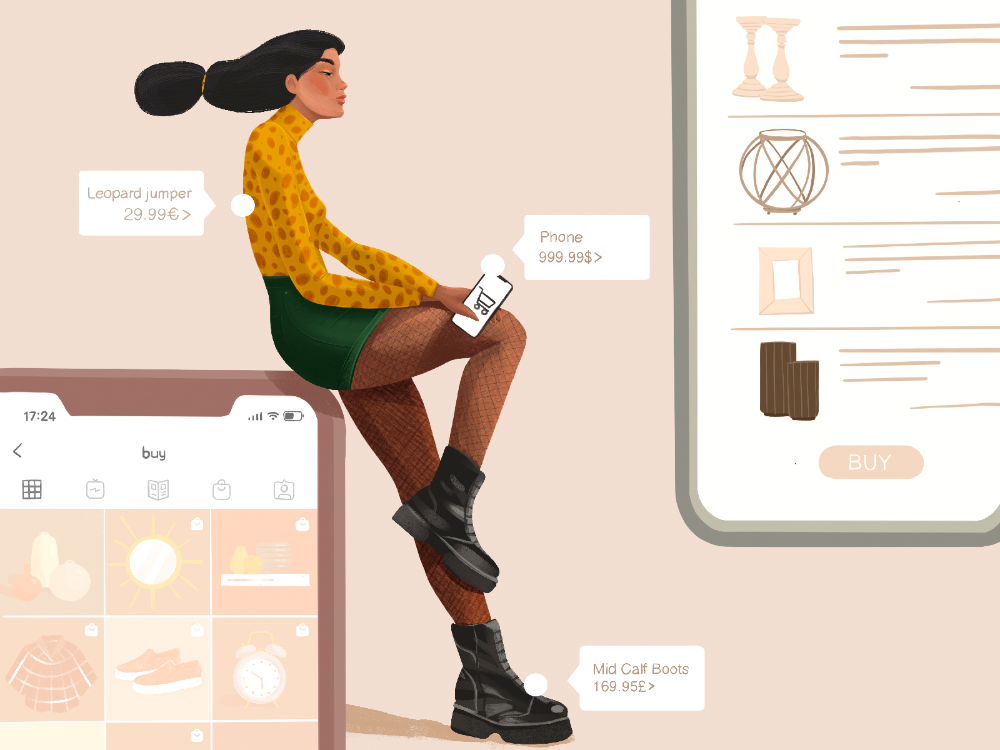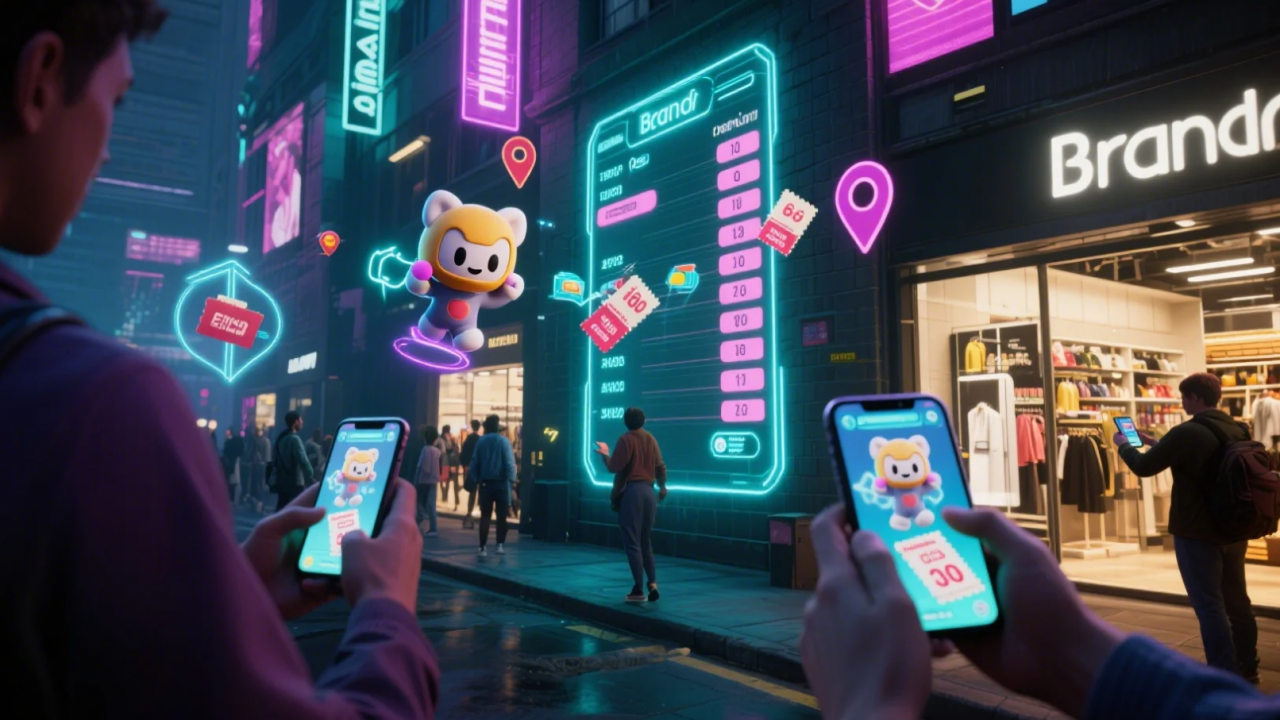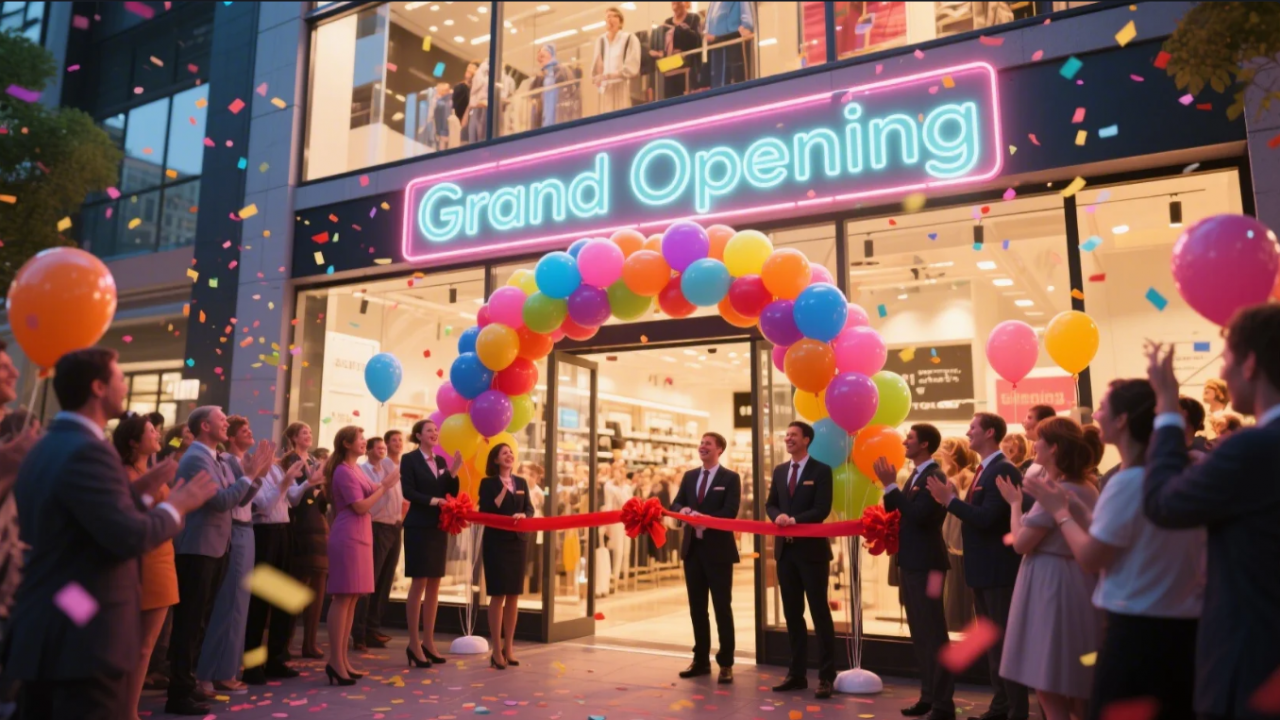In recent years, brands have begun to integrate the AR shopping experience. According to eMarketer, the total retail sales in the U.S. dropped by 14% in 2020, and it could take more than five years to return to pre-COVID-19 levels. During the same period, more than 10% of physical stores closed. The report also showed an 18% increase in e-commerce sales. More and more brands are shifting their marketing online, but it is still difficult to survive in the competition with traditional marketing. Actually, 71% of consumers said they would buy more often if they used AR shopping, and 67% of advertising agencies said they were using AR more. AR will be the key to e-commerce sales performance breakthrough.
In-store Shopping Experience Is Irreplaceable
A survey conducted by Retail Dive showed that 62% of consumers are more willing to physically interact with the products they consider purchasing. While the reports were full of retail closures, various studies reported that customers still prefer the in-store experience at the physical stores. Why do customers still rush into brick-and-mortar stores, especially in this age of omnichannel shopping? Here’s a look at the advantages of in-store shopping.
1. AR See-Now-Buy-Now for Quicker Buying Decision
Unlike the static online pictures, the offline in-store shopping experience allows consumers not only to touch the goods and see the details, but also to try them on directly. What you see is what you get, and this “AR See-Now-Buy-Now” model undoubtedly provides a reference for consumers to make quick decisions.
2. High-quality Shopping Guide Services Shorten the Buying Cycle
When shopping offline, there are usually professional shopping guides who will comprehensively explain the unique selling proposition (USP) to consumers, and provide high-quality services. Consumers don’t need to go to the inquiry online or even robots to get more information.
3. Distinctive In-store Displays Stimulate Decision-making Process
The unique in-store display can directly reflect the brand image, increase brand awareness as well as exposure. Therefore, a large proportion of consumers have a favorable impression on the product and are stimulated to make a purchase decision.
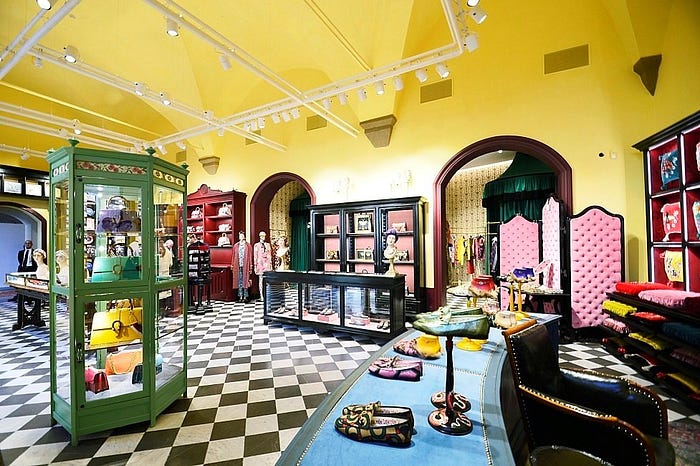
Redefine Shopping Experience: How Can AR Bridge the Online-Offline Gap
To remain competitive, retailers must adapt to changing consumer behavior and keep up with the emerging trends. It’s safe to say that physical retail is on the verge of a transformation, with many businesses shifting to e-commerce in 2020. E-commerce has its undoubtable advantages, but it fails to provide consumers with tactile interaction and a high level of product delivery compared to brick-and-mortar stores.
With augmented reality, online stores can quickly gain access to digital marketing hacks and provide their customers with a deeper, more immersive shopping experience. Augmented reality online shopping enables brands to establish richer, more memorable, and interesting emotions with consumers, successfully guiding them into online shopping smoothly.
1. AR Try-on: Virtual Try before You Buy Online
Kivisense AR try-on solution allows consumers to try products while viewing them, helping online brands achieve sales conversion through the AR “See Now, Buy Now” shopping experience.
View Products in the 3D Display
Kivisense high-performance rendering engines simulate thousands of materials, including metals, PVC, gemstones, fabrics, etc., making the reduction degree of 3D digital products reach more than 95%. While traditional e-commerce platforms typically allow consumers to view goods in the form of static pictures, AR technology provides an immersive shopping experience for online shoppers.
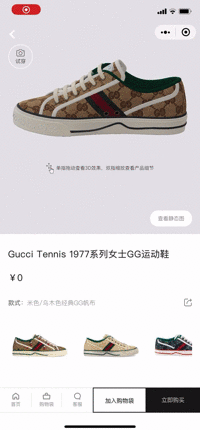
Virtual Try-on Products Before You Buy
The Kivisense AR try-on algorithms based on AI deep learning can realize stable face tracking, hand tracking, iris tracking, foot tracking, etc., in real-time, enabling consumers to instantly enjoy AR jewelry try-on, AR watch try-on, AR necklace try-on, AR shoes try-on, AR eyewear try-on, etc.

AR shopping experience can effectively reduce returns, improve consumer engagement & satisfaction, shorten the sales cycle, and achieve a higher ROI conversion rate, becoming the best way to seamlessly merge the physical and digital worlds together.
2. Virtual Boutiques: Next-Gen Shopping Experience
Digital boutiques support both mixed reality and 3D displays to meet the brands’ various needs. AR technology will help them highly simulate the offline shopping experience, increasing the probability of items being added to the cart as well as being purchased. What innovative shopping experiences can virtual stores bring to consumers? See below:
● Consumers can freely explore in the digital boutique and enjoy the brand voice
● The 3D display allows consumers to see more details and leave a good impression
● AR virtual try-on improves consumer satisfaction and purchase decision
● With one click, consumers can add the perfect item to their cart and complete the purchase

3. More Convenient Shopping and Higher Engagement
Businesses can integrate the Kivisense AR try-on engine into any platform they want, such as Web, App, EC SaaS Shopify, etc. AR for shopping will effectively bridge the online-offline gap. Check its highlights below:
● The Web-based AR technology greatly reduces the difficulty of experience and achieves more sales conversion
● Embedding the digital boutique on the official website will drive more private traffic to the brands. At the same time, with the precise advertising on social platforms, this innovative shopping experience helps brands reach more potential consumers
● Consumers can share their AR try-on photos with their friends & followers through social platforms, which helps the brand generate explosive spread in a short time
Conclusion
AR shopping creates a high-precision 3D boutique scenario for brands to redefine the shopping experience. Its revolutionized 3D displays allow consumers to view details in 360-degree. Furthermore, users can directly virtually try them on through AR to improve their satisfaction and shorten the buying cycle. With Kivisense WebAR try-on technology, the stylish try-on photos can be quickly shared across social media platforms, attracting more users to engage in. This new technology fully caters to the needs of offline shoppers and smoothly directs them to become their long-term online consumers, creating a huge growth for the brand’s online business.

